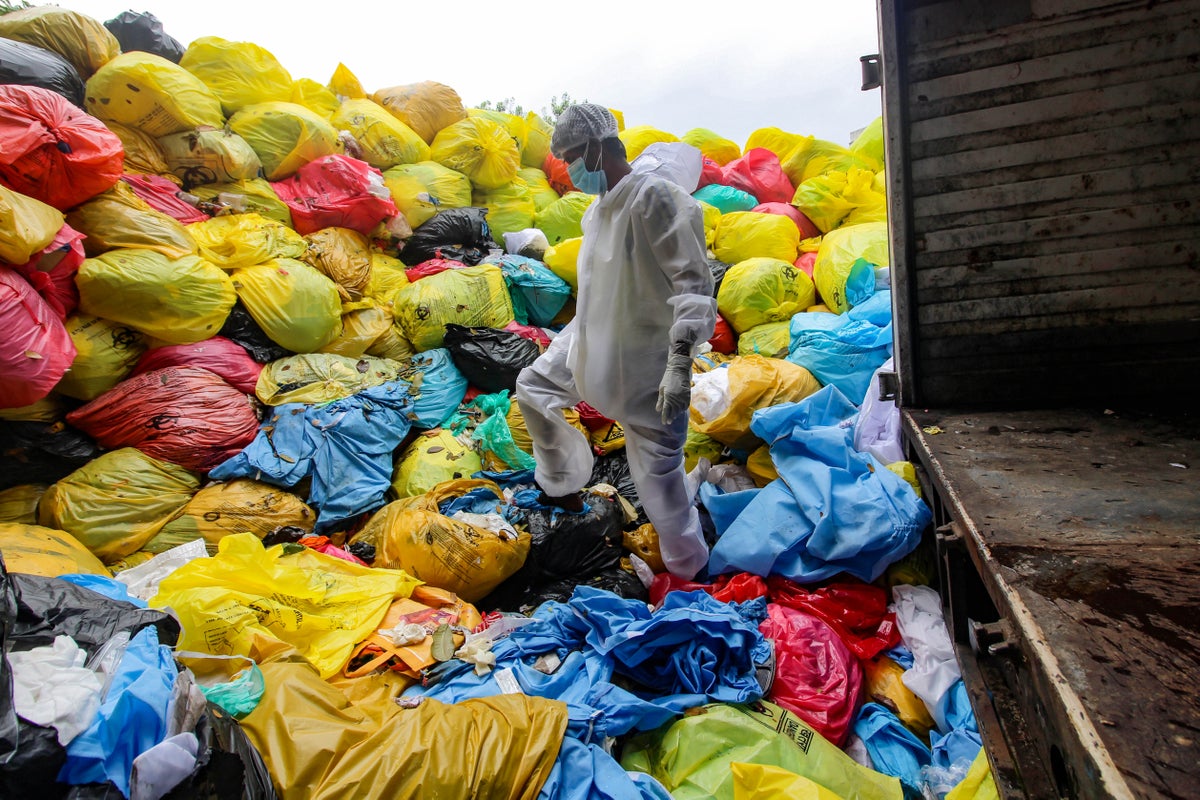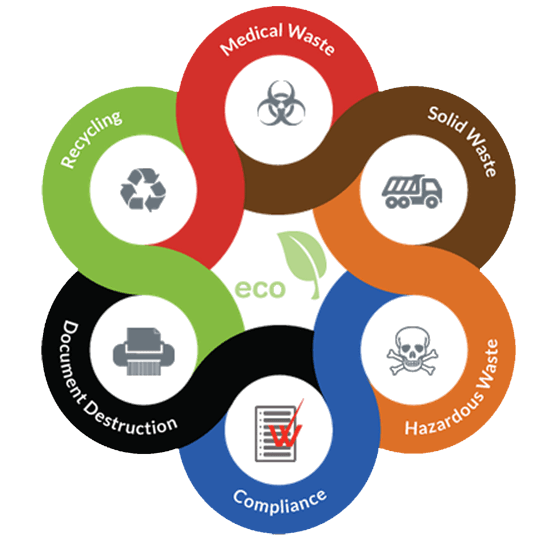Conformity and Rules for Medical Garbage Disposal
Compliance and regulations for medical waste disposal play a critical duty in guaranteeing the security and well-being of both medical care experts and the public. Proper management of medical waste is crucial to avoid the spread of infections, secure the setting, and maintain public wellness. This requires adherence to particular standards and procedures stated by regulative companies and bodies. These policies encompass different facets, including the category and segregation of medical waste, correct storage space and handling treatments, as well as transportation and disposal methods. By following these laws, healthcare centers can lessen the danger of contamination and possible injury to people and the atmosphere. This write-up will certainly discover the importance of conformity and supply a summary of the essential policies governing medical waste disposal.
Importance of Compliance
The value of compliance with laws for medical garbage disposal can not be overemphasized. Proper disposal of clinical waste is crucial for guaranteeing the safety and health of health care workers, patients, and the public. Medical waste, which consists of products such as used needles, polluted handwear covers, and biomedical waste, can posture severe health risks otherwise taken care of and gotten rid of correctly.
Compliance with laws makes certain that medical waste is handled in a way that decreases the potential for direct exposure to unsafe compounds and transmittable illness - medical waste removal service. It aids prevent the spread of infections, such as HIV, hepatitis B and C, and other bloodborne microorganisms. Conformity also plays a crucial role in shielding the atmosphere by preventing contamination of water resources, soil, and air
Failing to abide by guidelines can cause serious effects for medical care facilities, including penalties, lawsuit, and damages to their credibility. Additionally, non-compliance might endanger the wellness and security of medical care workers, people, and the community.
Conformity with laws for medical waste disposal needs adherence to particular guidelines and procedures. These might consist of proper partition, packaging, labeling, and storage space of medical waste. It additionally involves utilizing authorized disposal methods, such as incineration, autoclaving, or landfilling, depending on the kind of waste.
Regulatory Agencies and Bodies
Regulatory companies and bodies play a vital function in supervising conformity with laws for medical garbage disposal. These companies are liable for establishing methods, guidelines, and standards to make sure the appropriate and risk-free handling of medical waste. They apply and check conformity to protect public health and wellness and the atmosphere.
One of one of the most popular regulatory companies in the USA is the Epa (EPA) The EPA is responsible for regulating the storage, transport, treatment, and disposal of clinical waste. They establish guidelines for waste generators, transporters, and treatment centers to follow, making certain that all necessary preventative measures are taken to prevent the spread of conditions and contamination.
One more vital regulatory body is the Occupational Safety And Security and Health Administration (OSHA) OSHA establishes laws and standards to secure workers from job-related hazards, consisting of those relevant to medical waste. WasteX Medical Waste Disposal. They give guidelines for the risk-free handling and disposal of clinical waste to protect workers in medical care centers
Along with these government firms, specific states additionally have their very own governing bodies that oversee medical garbage disposal. These companies may have their own certain guidelines and demands that have to be adhered to.

Category and Partition of Clinical Waste
To guarantee proper monitoring of medical waste, it is necessary to identify and segregate it according to developed procedures and standards. medical waste removal service. Category and partition play an essential role in decreasing the danger of infection, shielding the setting, and making sure the safety of healthcare employees and the basic public
Medical waste is identified right into various classifications based on its prospective risk degree. These classifications consist of contagious waste, pathological waste, sharps waste, pharmaceutical waste, chemical waste, and contaminated waste. Each category calls for details handling, disposal, storage space, and transportation approaches to lessen the risk of direct exposure and contamination.
Segregation of medical waste includes separating different types of waste at the source. This process makes certain that waste with different threat levels is not combined, reducing the capacity for cross-contamination and making disposal treatments more reliable. Appropriate partition is achieved via using color-coded containers and tags, which help health care employees and waste administration employees deal with each kind and recognize of waste correctly.
In addition to category and segregation, health care centers must additionally follow local, state, and federal policies regarding medical waste monitoring. These policies detail certain demands for storage, transportation, therapy, and final disposal of medical waste, making certain conformity and maintaining public health and wellness and security.
Proper Storage and Handling Treatments
Correct storage space and taking care of procedures play a critical function in guaranteeing the compliant and risk-free administration of clinical waste. Medical waste, that includes things such as made use of syringes, polluted handwear covers, and expired drugs, can present severe health and ecological risks otherwise managed properly. As a result, it is vital for health care centers and other generators of medical waste to implement rigorous storage and taking care of procedures.
To start with, medical waste needs to be saved in durable, watertight containers go to website that are especially made for this objective. These containers ought to be labeled with the universal biohazard icon and the words "clinical waste" to clearly suggest the contents. Furthermore, the containers must be kept safely near prevent any type of potential leak or spillage.
Additionally, it is necessary to set apart various sorts of clinical waste to protect against cross-contamination. Sharps, such as needles and scalpels, must be stored in puncture-resistant containers to reduce the threat of injuries - WasteX Medical Waste Disposal. Chemical waste, such as solvents and disinfectants, must be kept independently from various other types of clinical waste to stop hazardous exposures or chemical reactions

Transport and Disposal Methods
Healthcare centers need to make certain the risk-free transportation and appropriate disposal of their clinical waste to adhere to regulations and protect public wellness. Transportation and disposal methods play a vital duty in preventing the spread of transmittable conditions and minimizing the environmental influence of clinical waste.
To transfer medical waste, health care facilities ought to use puncture-resistant and leak-proof containers that are classified with the biohazard icon. These containers should be safely secured to stop any leakage throughout transportation. Additionally, healthcare facilities must establish protocols for the transportation process, including making use of trained workers and dedicated vehicles.
As soon as the medical waste gets to the disposal center, it undergoes various techniques of therapy - WasteX Medical Waste Disposal. One typical technique is incineration, which involves burning the waste at high temperature levels to destroy pathogens and lower the volume of waste.
It is necessary for medical care centers to work with qualified and allowed waste monitoring firms to guarantee proper transport and disposal of clinical waste. These firms have the competence and resources to deal with clinical waste securely and in compliance with laws.
Conclusion
In final thought, conformity with laws for clinical waste disposal is of utmost relevance to ensure public wellness and safety. Generally, adherence to compliance and guidelines is necessary to efficiently take care of clinical waste.
Medical waste, which includes products such as used needles, polluted handwear covers, and biomedical waste, can posture significant wellness dangers if not handled and disposed of effectively.
These classifications consist of contagious waste, pathological waste, sharps waste, pharmaceutical waste, chemical waste, and radioactive waste.Partition of medical waste includes dividing various kinds of waste at the source. Correct partition is accomplished with the use of color-coded containers and tags, which assist healthcare employees and waste administration workers handle each kind and determine of waste appropriately.
Chemical waste, such as anti-bacterials and solvents, should be saved individually from various other types of medical waste to avoid chemical responses or dangerous direct exposures.